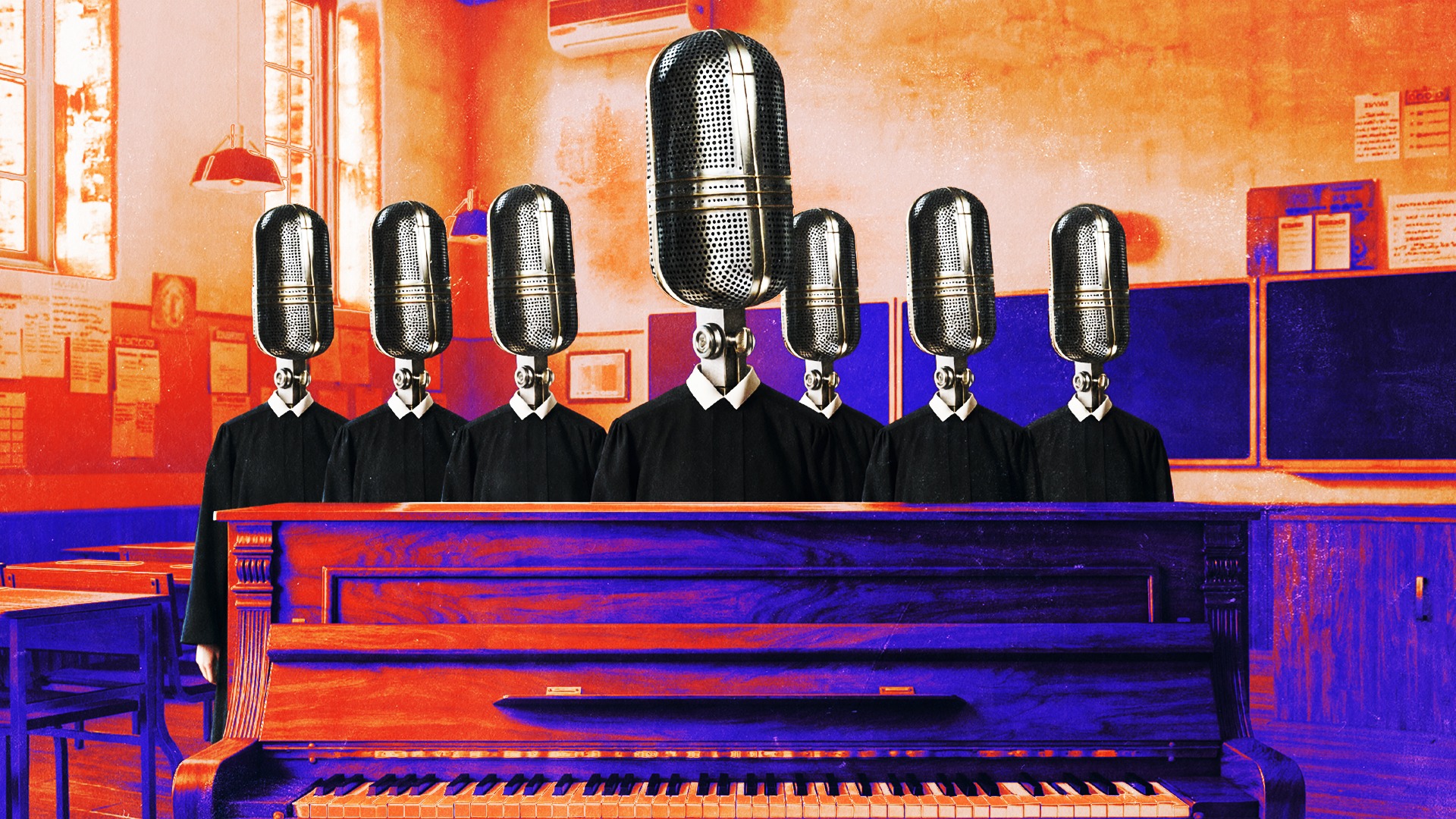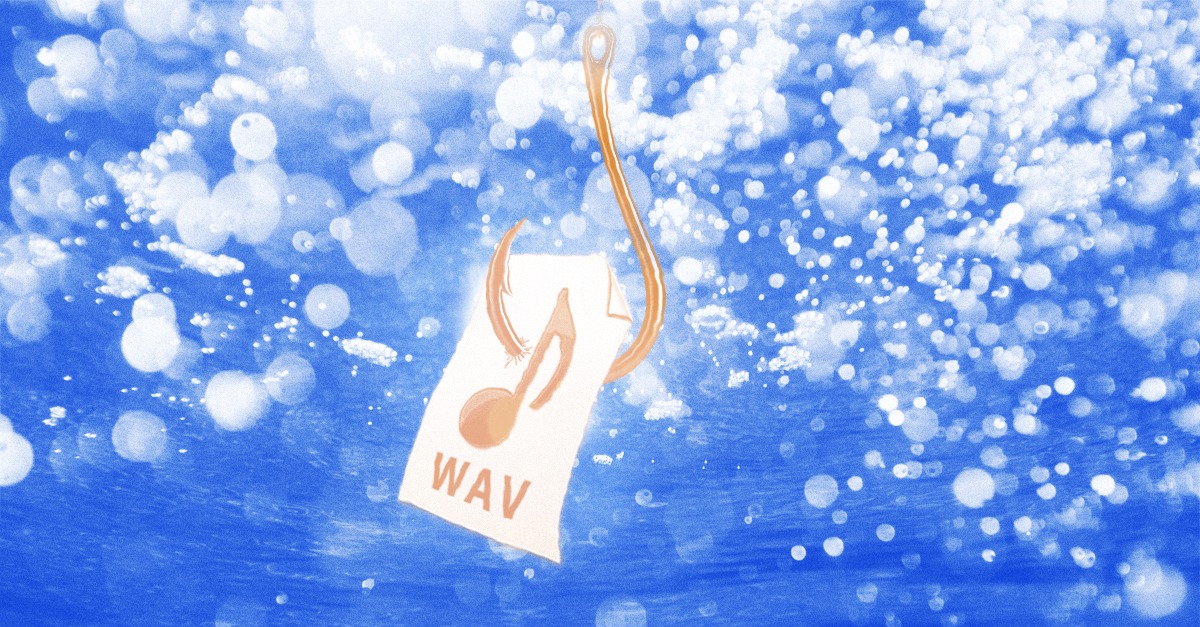
Hook vs. Chorus: How to Create the Catchiest Parts of a Song

Have you ever stared at a blank DAW template or an empty piece of paper and wondered to yourself, “What exactly makes a song catchy?” You are certainly not alone.
Writing catchy song parts is easily the most difficult part of writing music. You put together chords, melodies, instruments and vocals, but it’s not guaranteed that it will be catchy.
The goal of writing catchy music that sticks in the listener’s ear is arguably why concepts like the hook and the chorus came to be.
But hooks and choruses are not one and the same. Instead, they interact more like a Venn diagram.
Some hooks are in the chorus, but not all of them are.
In this article, we’ll explore the unique qualities of hooks and choruses and how they interact with each other.
We’ll also give you tips for writing catchy hooks and choruses of your own.
Let’s dive in!
What is a hook?
A song hook is a catchy lyric, melody, sound or rhythmic pattern typically found near the beginning of a song. Its goal is to “hook” the listener, encouraging them to continue listening.
A hook can be sung, played on an instrument or expressed with a sample. It can be as simple as a drum fill or as complicated as an entire choir and orchestra.
The choir sample in “Jesus Walks”, for example, tells you instantly what song you are hearing, just like the double-kick motorcycle drum solo in Van Halen’s “Hot for Teacher”.
Both of these hooks are very different in concept and execution, but both do the same job.
There’s no rule exactly for what a hook can be composed of. The only rule is that it’s there to uniquely and quickly identify a song to the listener and hook them in.

The opening guitar lick in Creed's song "Higher" is a great example of an instrumental hook.
What is a chorus?
Choruses are a much more traditional concept in songwriting, originating in ancient Greece. The intention behind a chorus is to return to a refrain of lyrical passages at least two times during a song. Those passages typically feature the core message and emotion of the song itself.
A typical song structure will start with a verse then return to a chorus, then a new verse, then a chorus, then a bridge and then a final chorus. This is known as the VCVCBC format.
Because repetition in music is known to play a big role in making part of a song memorable and catchy, it’s not surprising that the chorus is often the catchiest or most memorable part of a song.
But it’s also because choruses are intended to be sung along to. Chorus writers tend to go with simpler melodies and lyrics that are easily understood, since this encourages the listener or audience to join in.
🧠 Hot tip
Hook vs. chorus: Can they be both?
The short answer is yes! Hooks often reappear in the chorus, and sometimes songs start with a hook that introduces or at least hints at the coming chorus.
The main difference is that hooks are used to build expectation towards a satisfying release in the chorus. But there’s no reason why a hook can’t contain elements of the chorus.
Take Kanye West’s “Jesus Walks”, for example. The iconic chorus sample and choral part appear right at the beginning of the song, hooking the listener in before Kanye’s rap verse kicks in.
There are so many examples in popular music of hooks that reappear in the chorus and vice versa.
Of course, there’s no rule saying they have to be the same, and sometimes the hook isn’t anything like the chorus.
The main difference between them is that they serve a unique purpose while having a certain degree of crossover.
How to write better hooks and choruses
Now that the differences between hooks and choruses are clear, let’s explore all the ways you can make better hooks and choruses of your own!
Clear, compelling, singable lyrics
Whether they’re in your hook or your chorus, the lyrics and melody you use will be more memorable and catchy if they’re clear, vivid and easy to sing along to.
Choose vivid lyrics that poetically illustrate the crux of your song and try to find something to say that’s relatable to every human experience.
For the melody, keep it simple enough for others to remember and consider keeping away from challenging vocal parts that may alienate the listener. You can save that for verses!
Of course, there’s no exact rule for writing a chorus. Maybe you want the chorus to be more challenging in a way that showcases your singing skills. There’s nothing wrong with that!
But when it comes to writing poppy, catchy, radio-friendly music, the chorus should ideally be singable for everyone.
Pick a unique sample or instrumental that isn’t like anything out there
If you’re going with an instrumental hook, you have to make it unique.
The entire goal is to create something that reminds the listener immediately what song they’re listening to.
There’s a reason why producer tags are such an important phenomenon in hip-hop.
When a rapper launches a brand new single that no one has heard yet, the tag lets listeners know who’s involved in production and what to expect.
Adjust your hook and chorus over the course of the song
The chorus and any repeating hooks in your track don’t have to be the exact same every time. In fact, keeping everything the same could get boring and overly repetitive really quickly.
Play around with the chorus arrangement, dynamics and length. Add a pre- or post-chorus section. Chop and screw your hook sample. Change up the hook instrumental.
Do everything you can to keep the listener guessing while maintaining a sense of familiarity.
Be yourself and don’t overthink hooks and choruses
Like any skill-demanding task, songwriting is an ongoing process that takes a lifetime to master.
So don’t overthink it, be authentic and share yourself with the world.
Yes, we’ve given some soft rules and tips about how hooks and choruses work, but in songwriting, every rule is 100% there to be broken.
So get creative and put careful thought, artistry and attention into how your songs will hook listeners, and keep them hungry to listen through each chorus!
Gear guides, tips, tutorials, inspiration and more—delivered weekly.
Keep up with the LANDR Blog.









